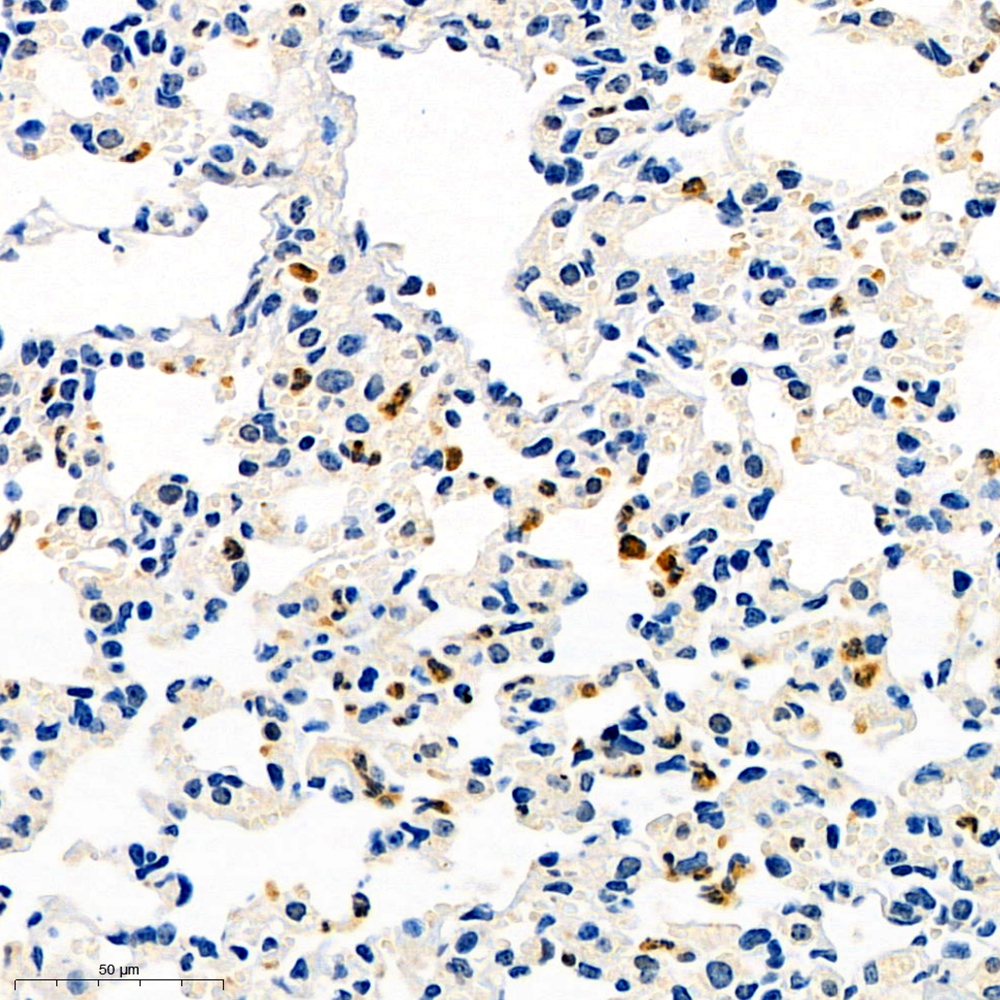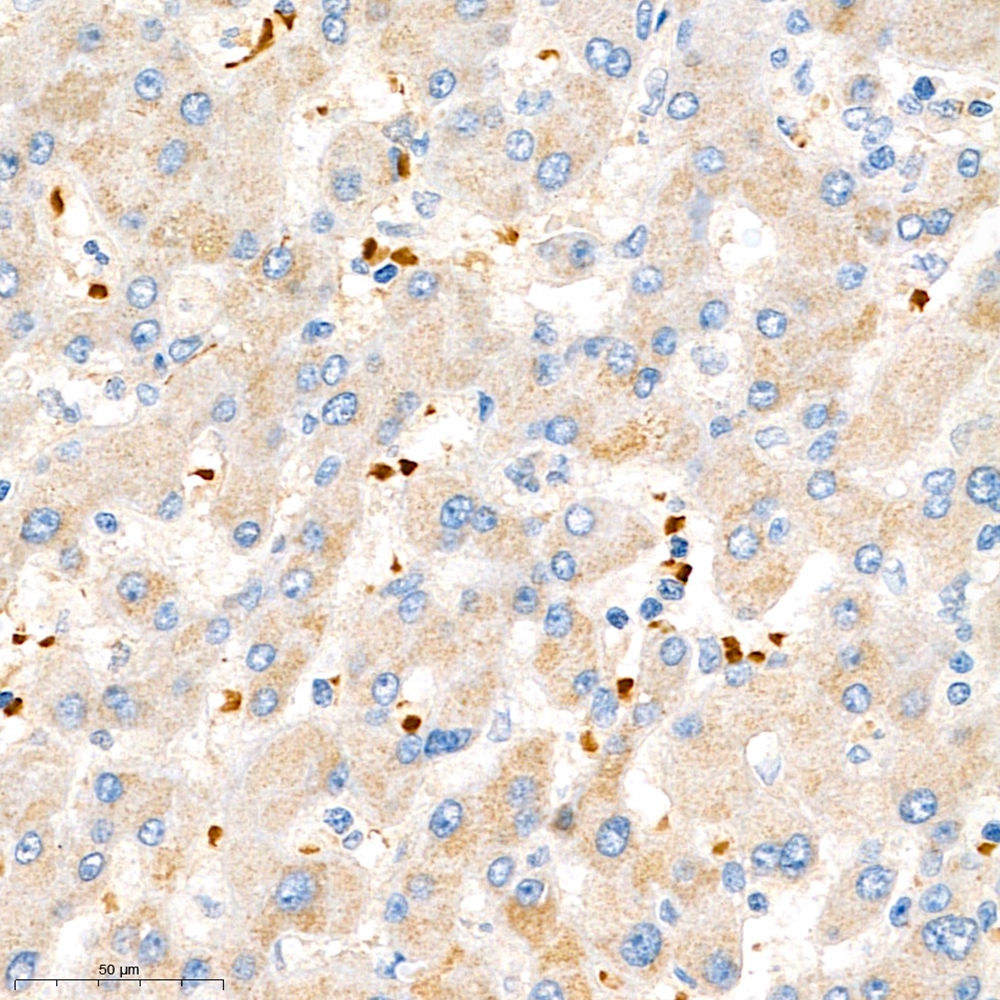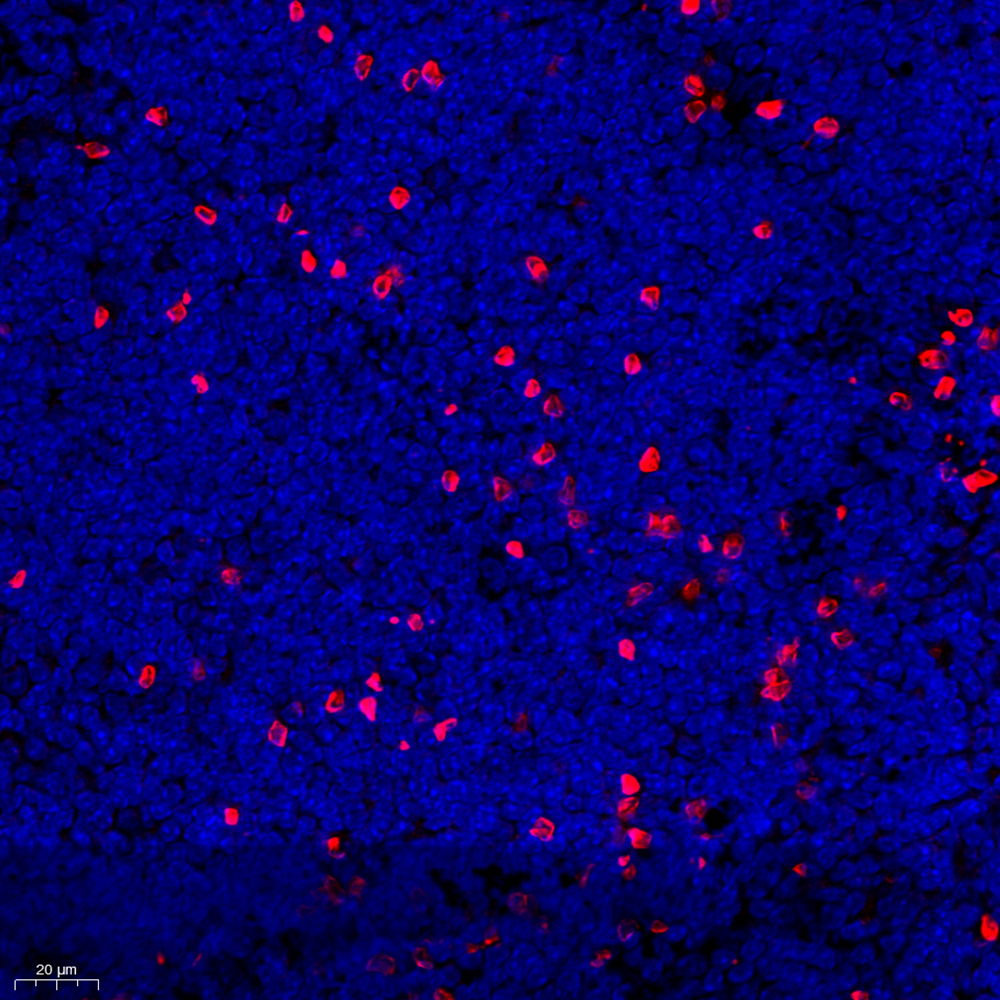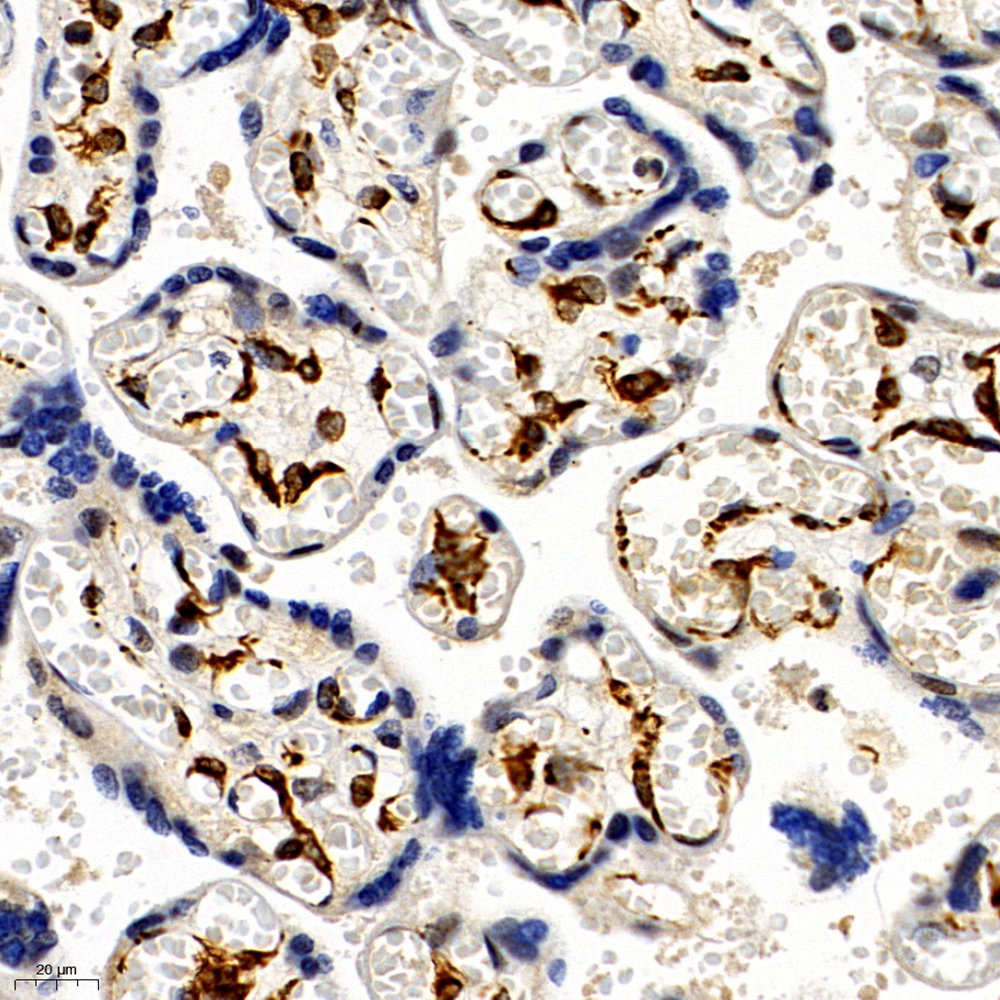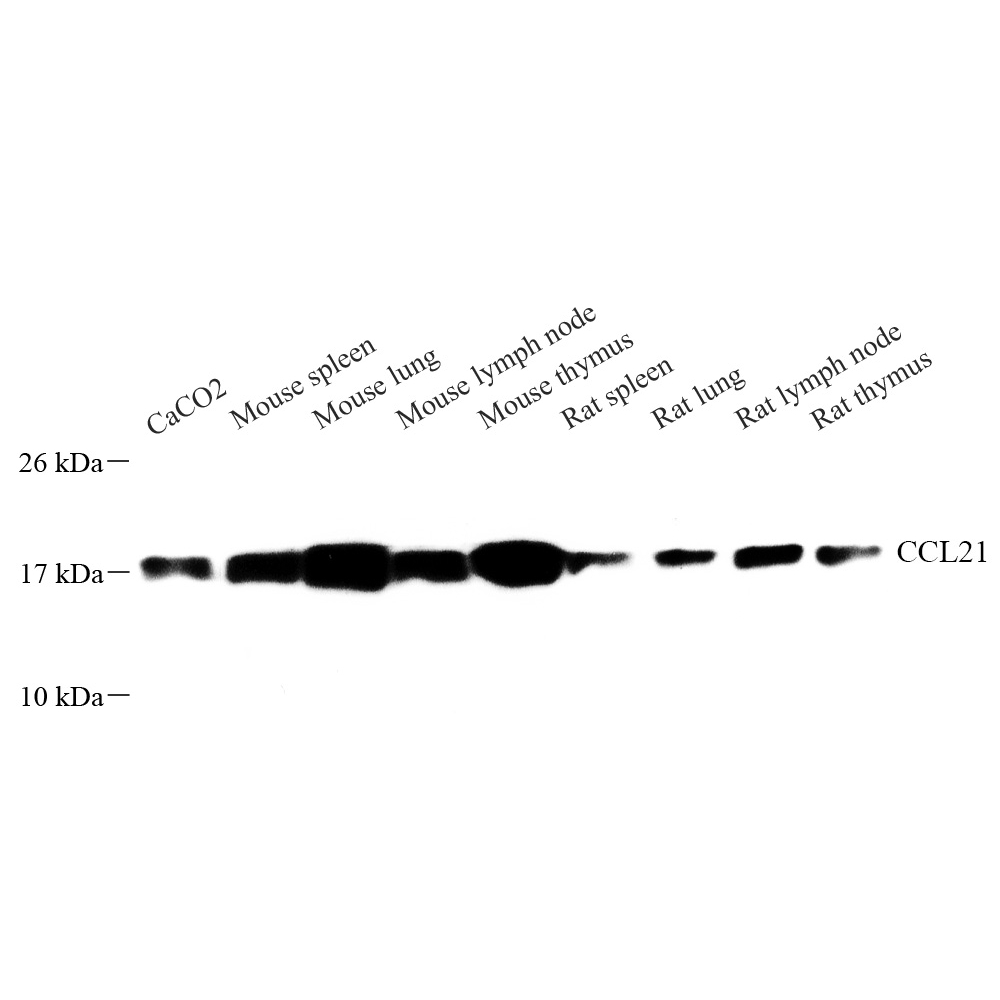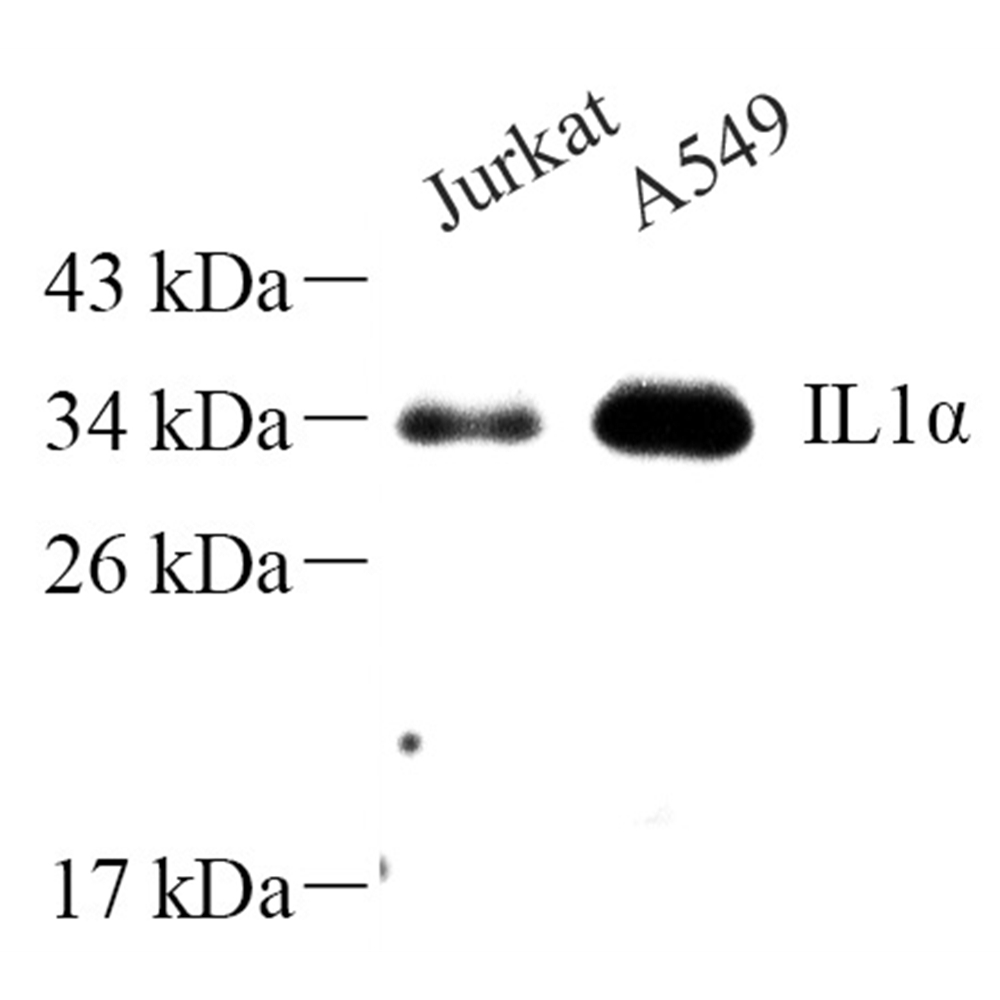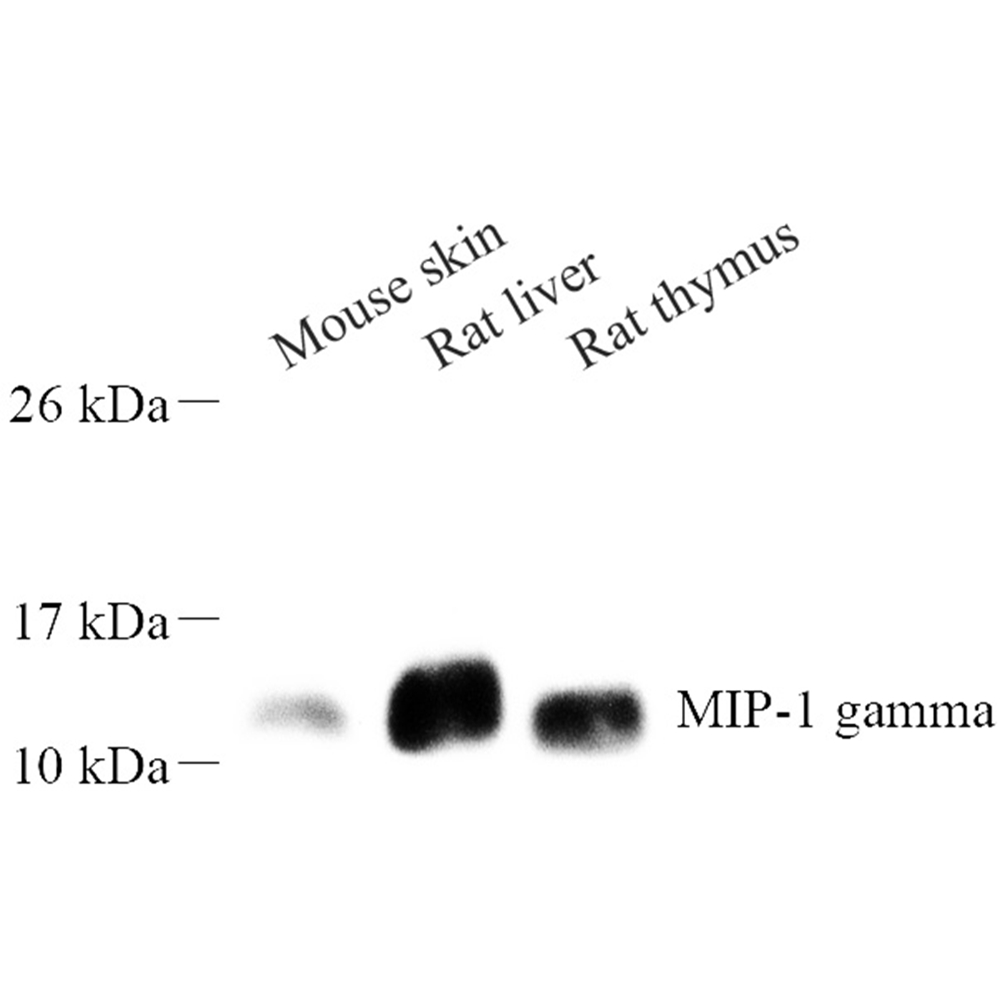服務(wù)熱線
400-1016-218


全國(guó)統(tǒng)一服務(wù)熱線
400-1016-218
科研好幫手 專業(yè)生產(chǎn)商
本公司產(chǎn)品僅供科研使用
您現(xiàn)在所在位置:主頁(yè) > 產(chǎn)品中心 > 抗體 >>一抗 >>趨化因子受體 >> Anti -CCR7 Rabbit pAb


Product Information
|
Description |
CCR7 rabbit polyclonal |
|
Protein full name |
C-C chemokine receptor type 7 |
|
Synonyms |
BLR2, CC-CKR-7, CCR-7, CD197, CDw197, CMKBR7, EBI1, C-C motif chemokine receptor 7 |
|
Immunogen |
KLH conjugated Synthetic peptide corresponding to Mouse CCR7 |
|
Isotype |
IgG |
|
Purity |
Affinity purification |
|
Predicted MW. |
43 kDa |
|
Observed MW. |
48 kDa |
|
Uniprot ID |
Applications
|
applications |
species |
dilution |
Positive tissue |
|
WB |
Human, Mouse, Rat |
1: 500-1: 1000 |
thymus, spleen |
Background
The protein encoded by this gene is a member of the G protein-coupled receptor family. This receptor was identified as a gene induced by the Epstein-Barr virus (EBV), and is thought to be a mediator of EBV effects on B lymphocytes. This receptor is expressed in various lymphoid tissues and activates B and T lymphocytes. It has been shown to control the migration of memory T cells to inflamed tissues, as well as stimulate dendritic cell maturation. The chemokine (C-C motif) ligand 19 (CCL19/ECL) has been reported to be a specific ligand of this receptor.
Images
|
|
Western blot analysis of CCR7 (GB11503) at dilution of 1:800. Lane 1:Jukat cell lysate Lane 2:THP-1 cell lysate Lane 3:Raw264.7 cell lysate Lane 4:Mouse Inflammatory spleen tissue lysate Lane 5:Mouse Inflammatory liver tissue lysate Lane 6:Mouse thymus tissue lysate Lane 7:Rat Inflammatory spleen tissue lysate Lane 8:Rat Inflammatory liver tissue lysate Lane 9:Rat thymus tissue lysate |
|
|
Western blot analysis of preincubated with the control peptide antigen (left) and CCR7 (GB11503) at dilution of 1:800(right). Lane 1:Jurkat cell lysate Lane 2:THP-1 cell lysate Lane 3:Mouse thymus tissue lysate Lane 4:Rat thymus tissue lysate |
Storage
| Storage | Store at -20 ℃ for one year. Avoid repeated freeze/ thaw cycles. |
| Storage Buffer | PBS with 0.02% sodium azide, 100 μg/ml BSA and 50% glycerol. |
NOTE:
1.This product is intended for research only.
2.This product is recommended to dilute with the Primary Antibody Dilution Buffer .
合肥萬(wàn)物生物科技有限公司
客服熱線:400-1016-218
QQ:355185756
地址:安徽省合肥市高新區(qū)黃山路602號(hào)合肥國(guó)家大學(xué)科技園A401室
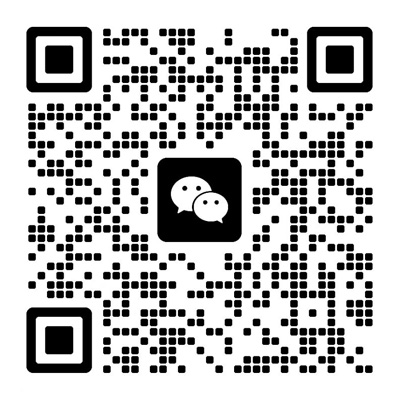


 關(guān)注微信公眾號(hào)
關(guān)注微信公眾號(hào)


